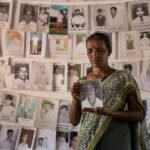What were the main consequences of the anti-Tamil riots in Sri Lanka during Black July?
The anti-Tamil riots during Black July in 1983 had profound and lasting consequences for Sri Lanka and its people. Some of the main consequences include:
1. **Loss of Life and Displacement**: Thousands of Tamils were killed, and many more were injured. The violence led to a significant number of people being displaced from their homes, resulting in a humanitarian crisis.
2. **Escalation of Ethnic Conflict**: The riots marked a turning point in the Sri Lankan civil conflict, intensifying tensions between the Sinhalese and Tamil communities. This escalation contributed to the formation and strengthening of Tamil militant groups, most notably the Liberation Tigers of Tamil Eelam (LTTE).
3. **International Attention and Support for Tamils**: The violence drew international condemnation and led to increased global awareness of the Tamil plight in Sri Lanka. Many Tamils sought asylum in other countries, leading to the establishment of diaspora communities that became vocal advocates for Tamil rights.
4. **Economic Impact**: The riots caused significant economic disruptions, particularly in areas heavily populated by Tamils. Businesses were destroyed, and many Tamil professionals and entrepreneurs fled the country, leading to a brain drain.
5. **Political Changes**: The riots shifted the political landscape in Sri Lanka, leading to increased polarisation along ethnic lines. Subsequent governments adopted varying approaches to address the conflict, often leading to further tensions rather than resolution.
6. **Societal Divisions**: The events of Black July deepened societal divisions and mistrust between ethnic communities. The trauma experienced by the Tamil community continues to affect inter-ethnic relations in Sri Lanka.
7. **Long-term Psychological Effects**: The violence left deep psychological scars on survivors and their families, contributing to ongoing trauma that affects generations.
Overall, Black July had far-reaching implications that extended beyond the immediate violence, shaping the trajectory of Sri Lanka’s history and its ongoing struggles with ethnic relations and reconciliation.






